
Satellite images show Iranian missile bases in Syria’s Wadi Jahannam
Staff writer, Al Arabiya English/Sunday, 2 September 2018
Satellite images have revealed that Iran is building new missile bases in Syria, most notably in Wadi Jahannam in Banyas west of Syria.
The images taken by Image Sat International were released in a detailed report, show that a facility in Wadi Jahannam, designed to manufacture and assemble different types of missiles similar to the two military bases of Parchin and Khujir inside Iran.
The report noted that it is likely that the same Iranian elements are behind the planning and construction of this facility which is at the final stages. The company estimates that this construction will be completed in the first months of 2019.
Also there is another site which included a surface-to-surface missile production line built inside an old Syrian military base in Masyaf region in the north-west of the country. This base was converted to fit the current purpose, the same as the one that was attacked on 7 September, 2017 by the Israeli Air Force.
The locations of Masyaf and Wadi Jahannam are both within the scope of the operation to deploy the Russian S-400 missile defense systems, whereas Russian forces are deployed throughout the country in support of the Syrian regime.
The report pointed out that Iran chose these strategic sites because of the Syrian regime which moved its strategic infrastructure to the north of the country following the escalation of the Syrian revolution.
The Image Sat International report also referred to the visist of Iranian defense minister Amir Hatami last Sunday to Syria, where he announced that Iran has the ability to help Syria build capacity and expand military capabilities in the country.
The report confirmed that Iran’s intentions, as expressed by Hatami’s announcement, as well as satellite images clearly indicate that Iran is rebuilding the military infrastructure of the Syrian regime, especially in the field of production and development of surface-to-surface missiles.
In recent months, several attacks have been launched against various facilities in Syria, most of which targeted the missile infrastructure, but one targeted Dr. Aziz Asbar, who was managing the project to develop the Syrian missile system.
Asbar was the head of Sector 4 at the Center for Syrian Studies and Research, and had close and long-term relations with Iran and Hezbollah. Because of his important role and his own relations with Iran, he is likely to have played an active role in the construction of the new facilities in Masyaf and Wadi Jahannam, which were designed according to Iran’s objectives and its missile system in Syria, according to the report.
The report stressed that Iran continues its activities in Syria in clear violation of international resolutions, and is expected to send the technology of missile system developed in Syria, to Lebanon’s Hezbollah as well.
إيران في “وداي جهنم”.. قواعد صواريخ كشفتها الأقمار
العربية.نت ـ صالح حميد/01 أيلول/18
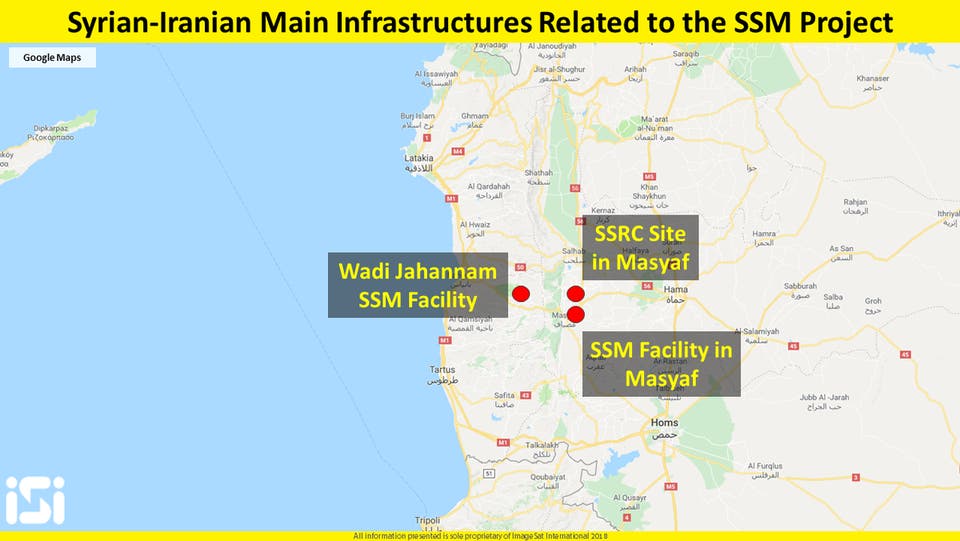
كشفت صور للأقمار الاصطناعية قيام إيران ببناء قواعد صواريخ جديدة في سوريا، أهمها في “وادي جهنم” في منطقة بانياس السورية، غرب البلاد.
وتُظهر الصور التي التقطتها “صور الاقمار الاصطناعية الدولية” Image Sat International ضمن تقرير تفصيلي، أن منشأة في وادي جهنم، صُممت لتصنيع وتجميع أنواع مختلفة من الصواريخ على نمط مواقع قاعدتي بارشين وخوجير، العسكريتين في إيران.
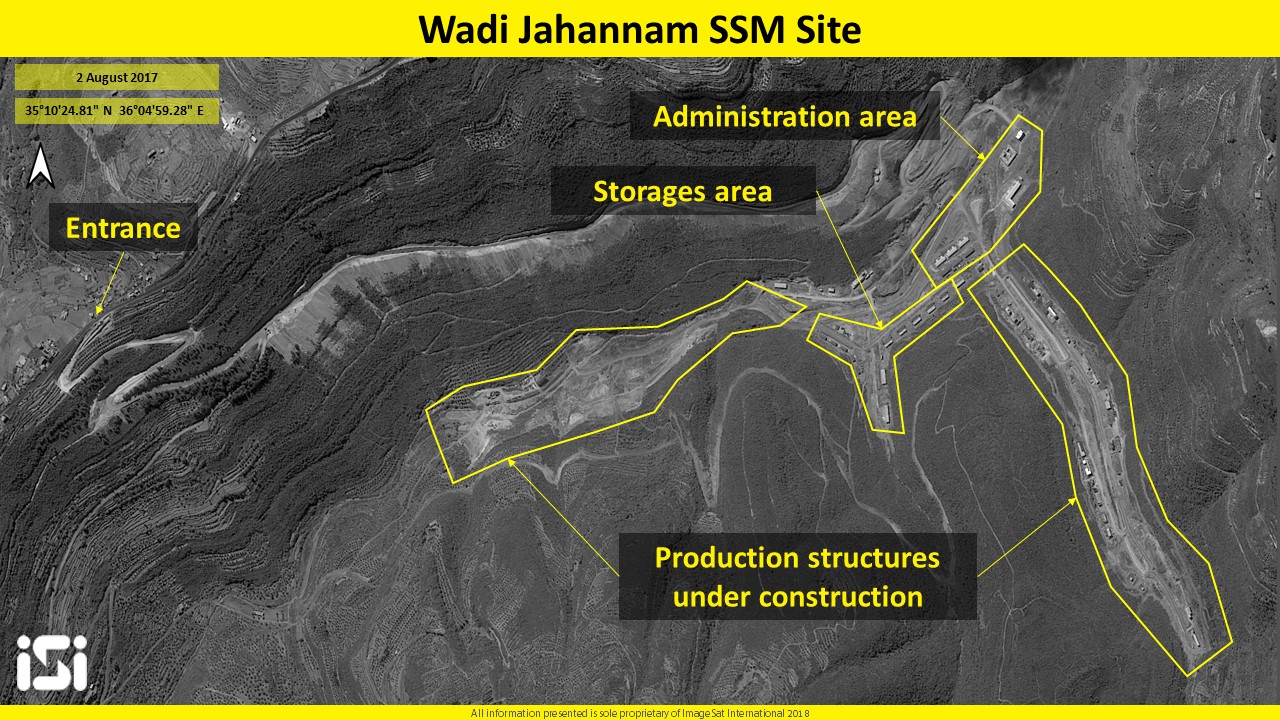
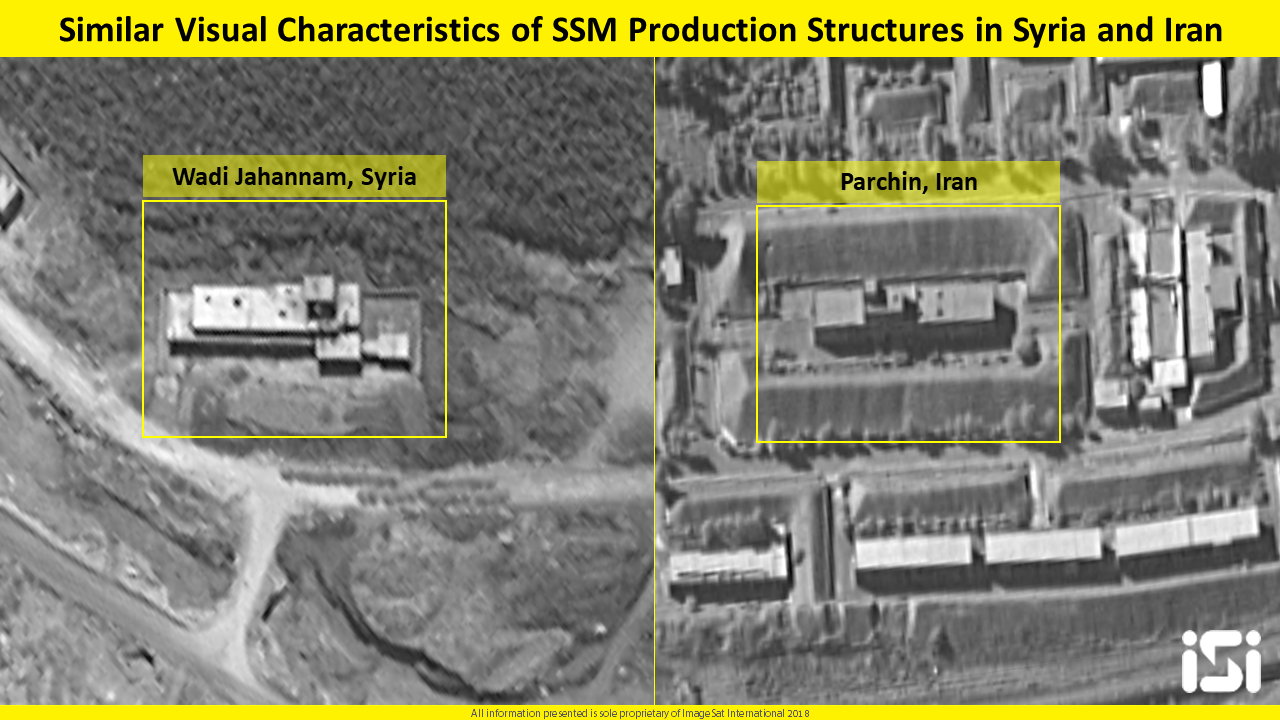
ورجح التقرير أنه من المحتمل أن تكون نفس العناصر الإيرانية هي المسؤولة عن التخطيط والبناء لهذه المنشأة التي تمر بمراحلها النهائية. وتقدر الشركة أن عملية البناء هذه ستنتهي خلال الأشهر الأولى من عام 2019.
كما أن هناك موقعاً آخر يشمل خط إنتاج صواريخ أرض – أرض بني داخل قاعدة عسكرية سورية قديمة في مصياف، في شمال غرب البلاد. وتم تحويل هذه القاعدة لتتناسب مع الغرض الحالي، وهي نفس القاعدة التي هوجمت في 7 سبتمبر 2017 من قبل سلاح الجو الإسرائيلي.
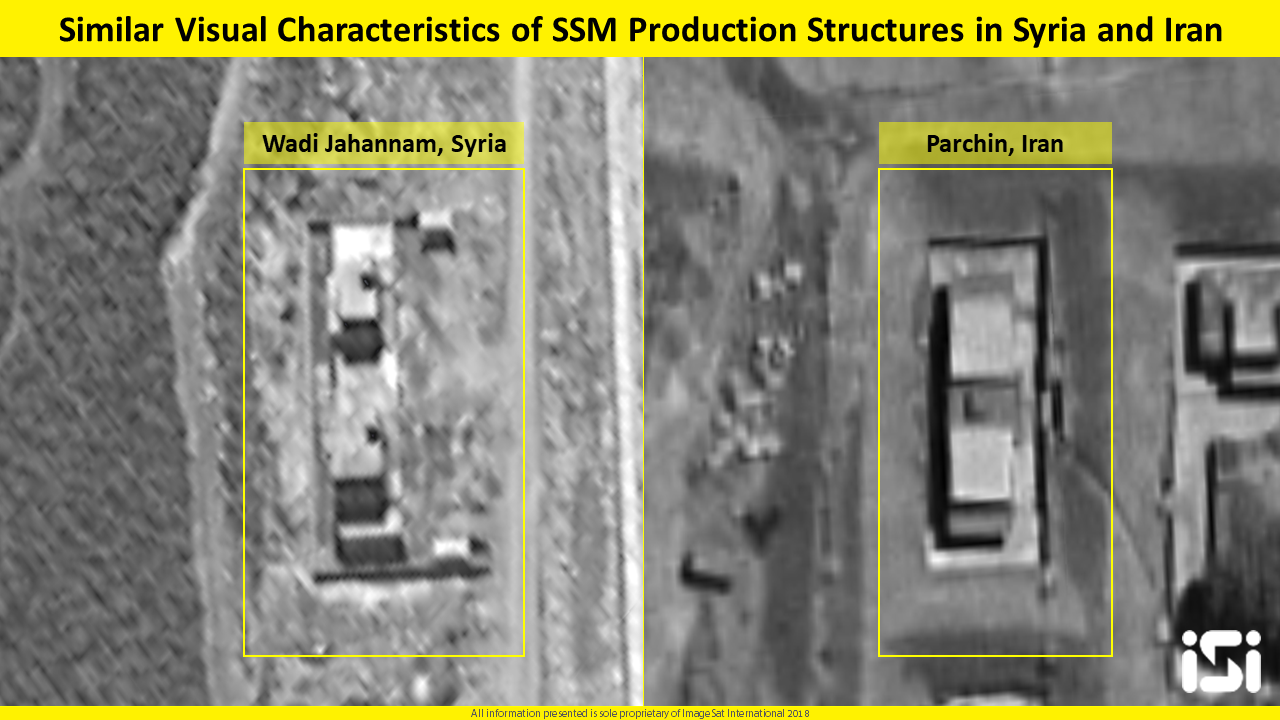
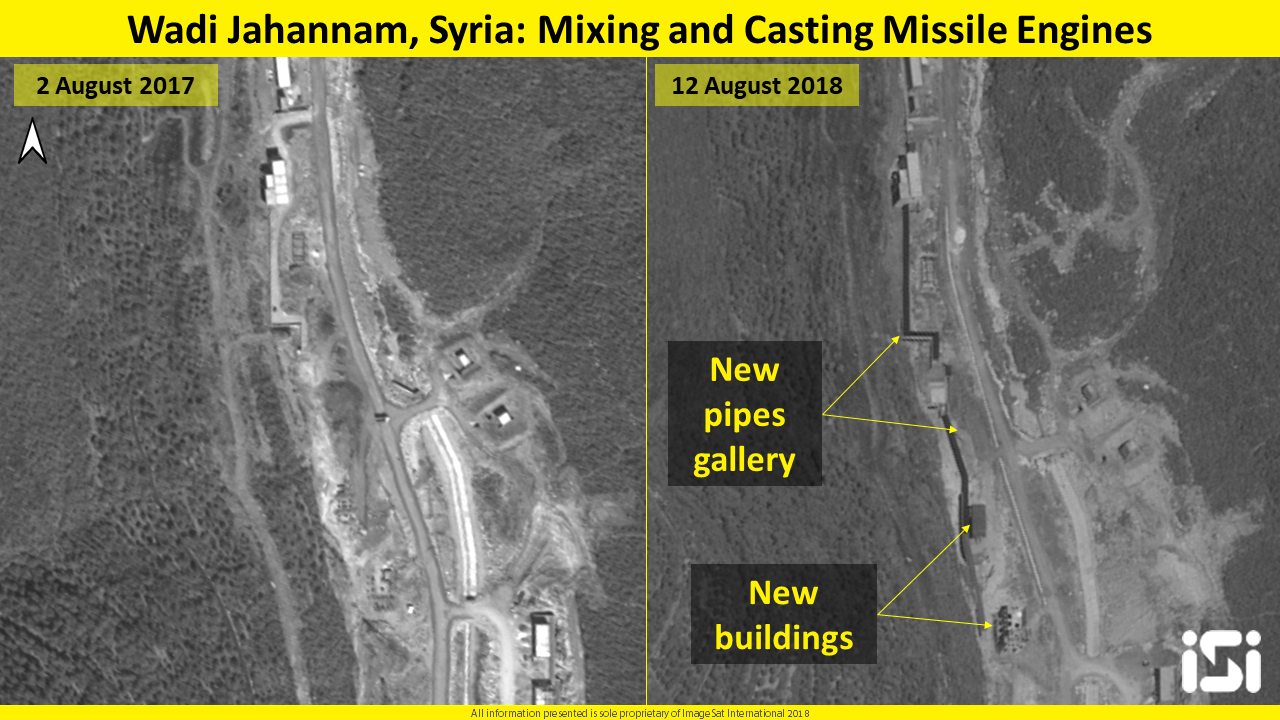
وتقع مواقع كل من مصياف ووادي جهنم ضمن نطاق العملي لنشر منظومات صواريخ S-400لروسيا التي تنتشر قواتها في أنحاء مختلفة البلاد، دعماً للنظام السوري ولهذا يبدو أن القصف الإسرائيلي لم يطالهما.
وأشار التقرير إلى أن إيران اختارت هذه المواقع الاستراتيجية بسبب قيام النظام السوري على نقل بعض بنيته الأساسية الاستراتيجية إلى شمال البلاد عقب تطورات الثورة السورية.
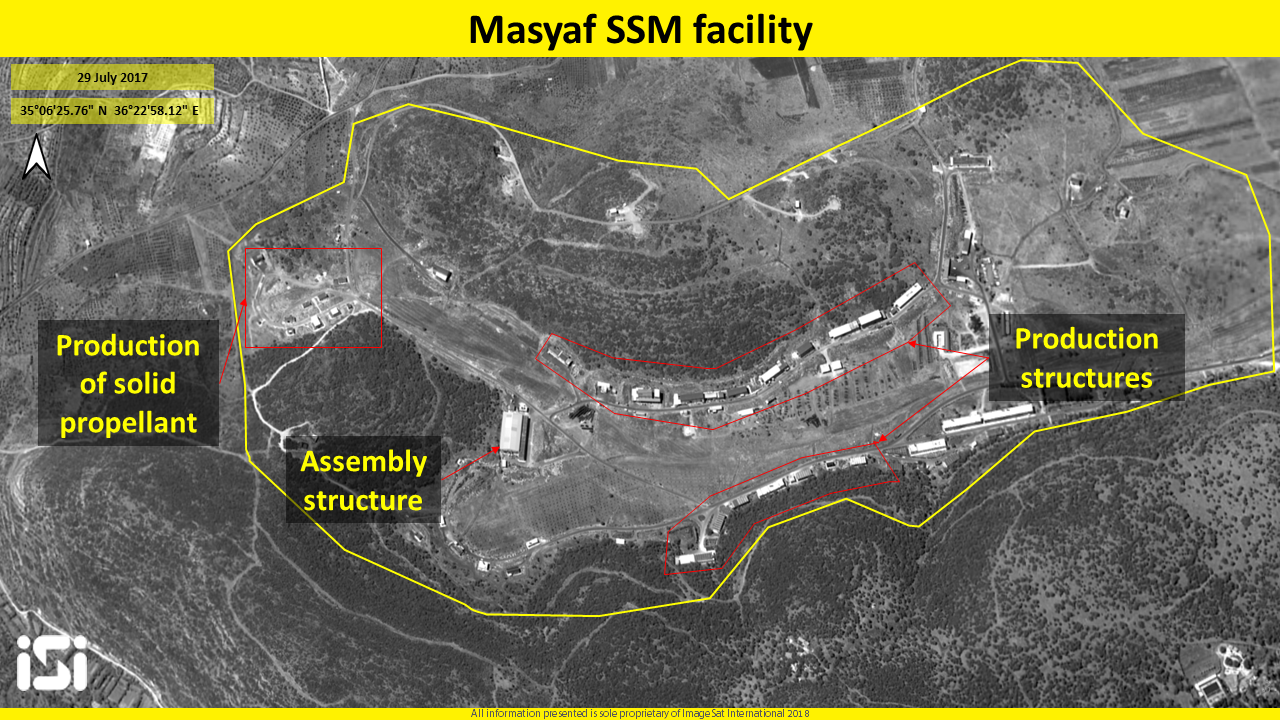
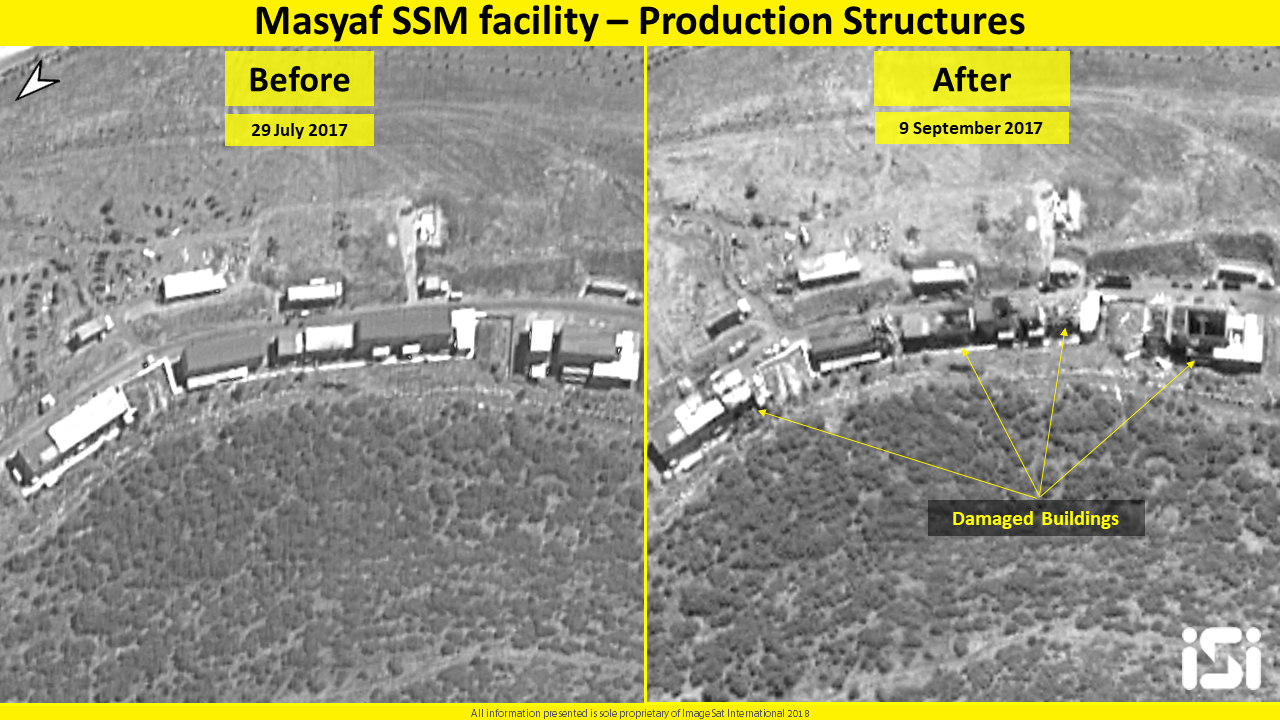
كما تطرق إلى الزيارة التي قام بها وزير الدفاع الإيراني أمير حاتمي، خلال الأيام الماضية بصحبة مسؤولين في الحرس الثوري الإيراني وإعلانه في 26 أغسطس الماضي، أن إيران لديها القدرة على مساعدة سوريا في بناء القدرات وتوسيع القدرات العسكرية على البلاد.
وأكد التقرير أن نوايا إيران كما عبر عنها إعلان حاتمي، إلى جانب صور الاقمار الاصطناعية تشير بوضوح إلى أن إيران تعيد بناء البنية التحتية العسكرية للنظام السوري، خاصة في مجال إنتاج وتطوير صواريخ أرض أرض.
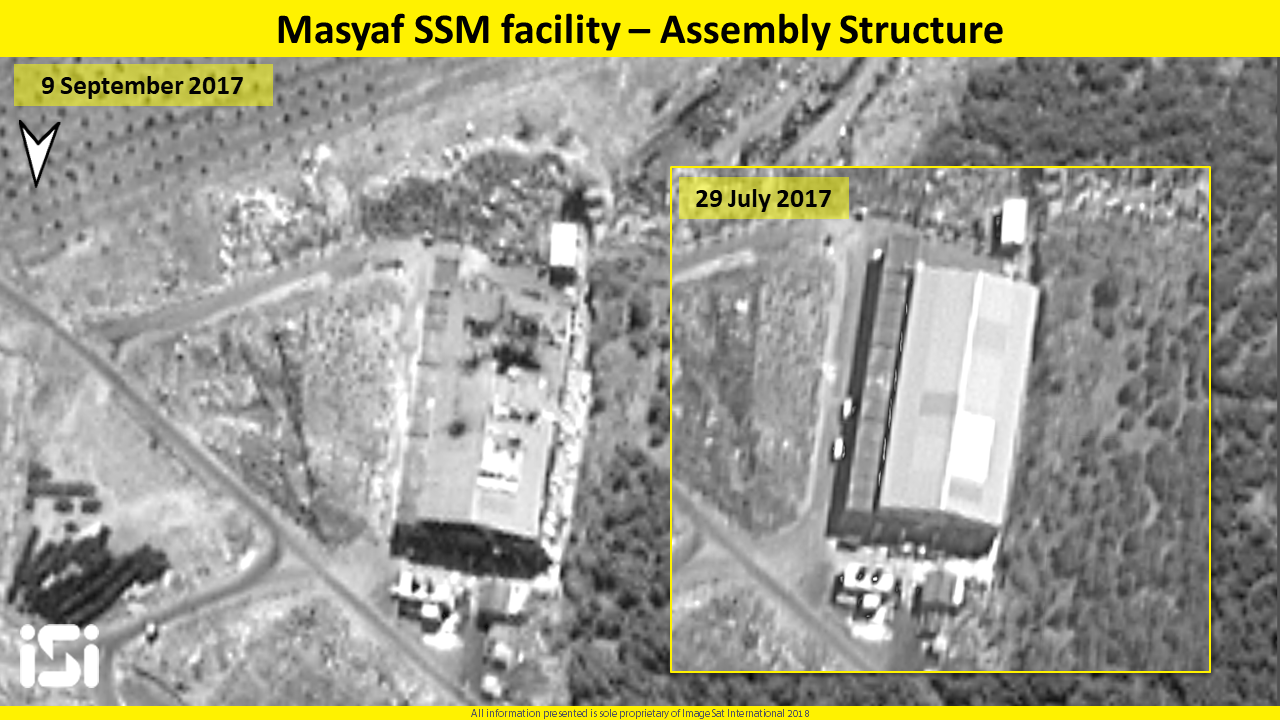
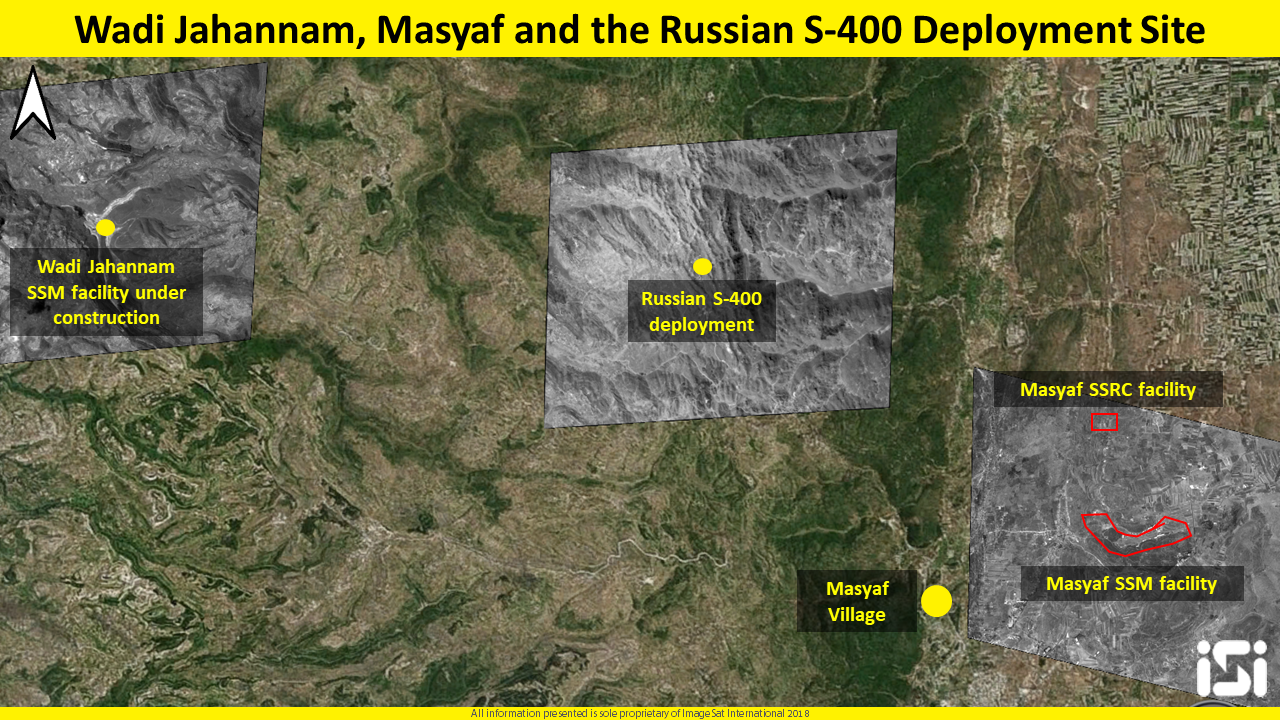
وخلال الأشهر الأخيرة، تم شن عدة هجمات ضد منشآت مختلفة في سوريا، حيث استهدفت معظمها البنية التحتية لقواعد الصواريخ، لكن إحداها استهدفت الدكتور عزيز اسبر، الذي كان يدير مشروع تطوير منظومة الصواريخ السورية.
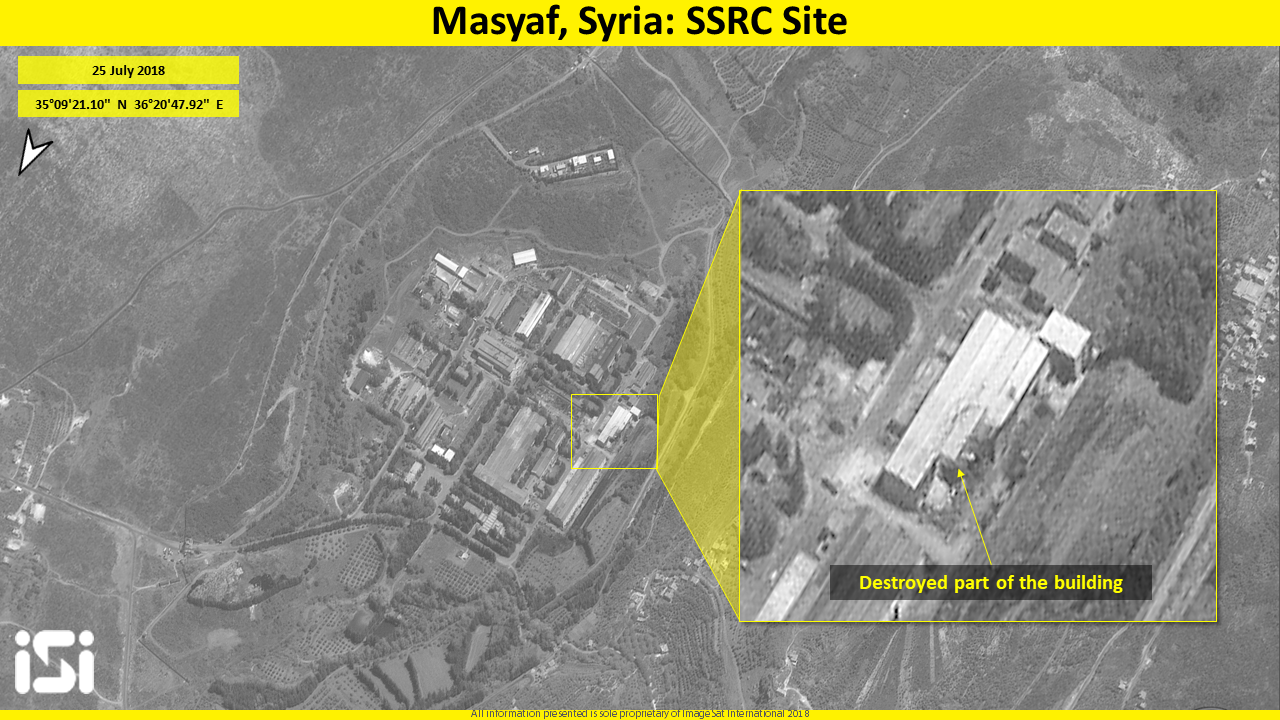
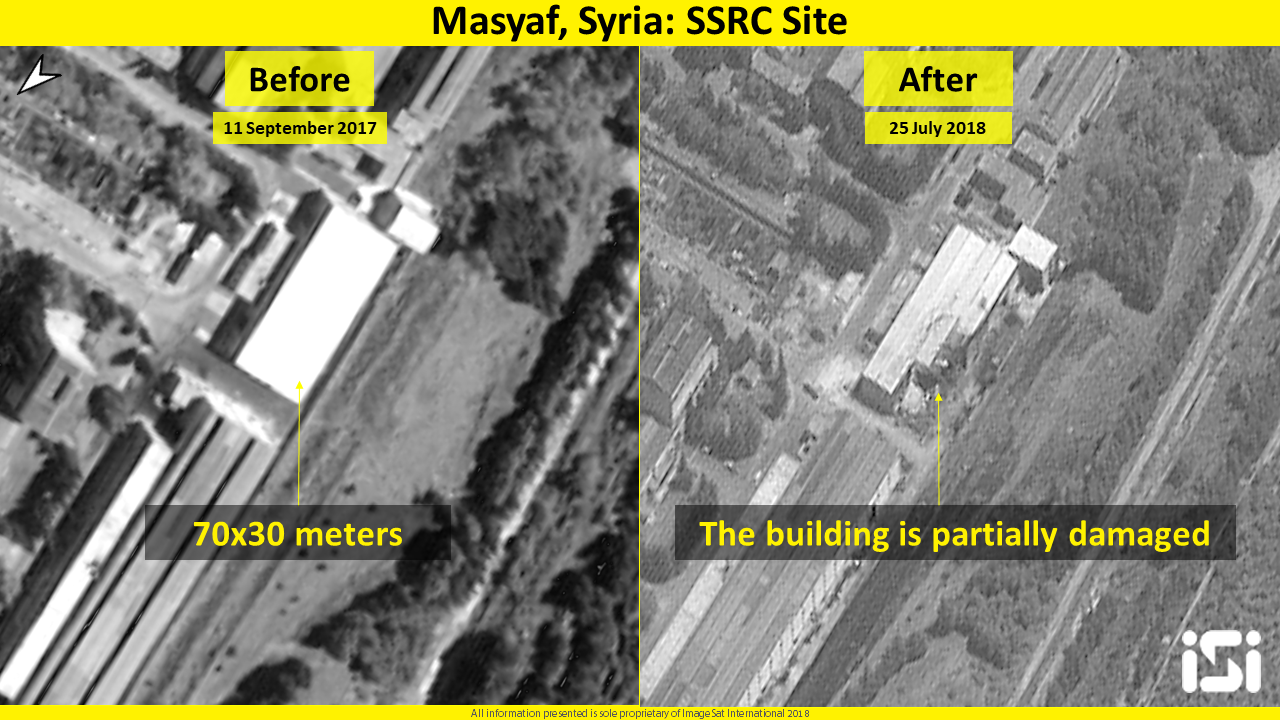
وكان اسبر رئيس “القطاع 4” في مركز الدراسات والبحوث العلمية السورية، وكانت له علاقات وثيقة وطويلة الأمد مع إيران وحزب الله. وبسبب دوره الهام وعلاقاته الخاصة مع إيران، من المحتمل أن يكون قد لعب دوراً فعالاً في بناء المنشآت الجديدة في مصياف ووادي جهنم والتي تم تصميمها وفقاً للأهداف الإيرانية ومنظومتها الصاروخية في سوريا.
ويؤكد التقرير أن إيران تواصل نشاطها في سوريا في انتهاك واضح للقرارات الدولية، ومن المتوقع أن ترسل تقنية منظومة الصواريخ التي تطورها في سوريا إلى ميليشيات “حزب الله” في لبنان أيضا.































